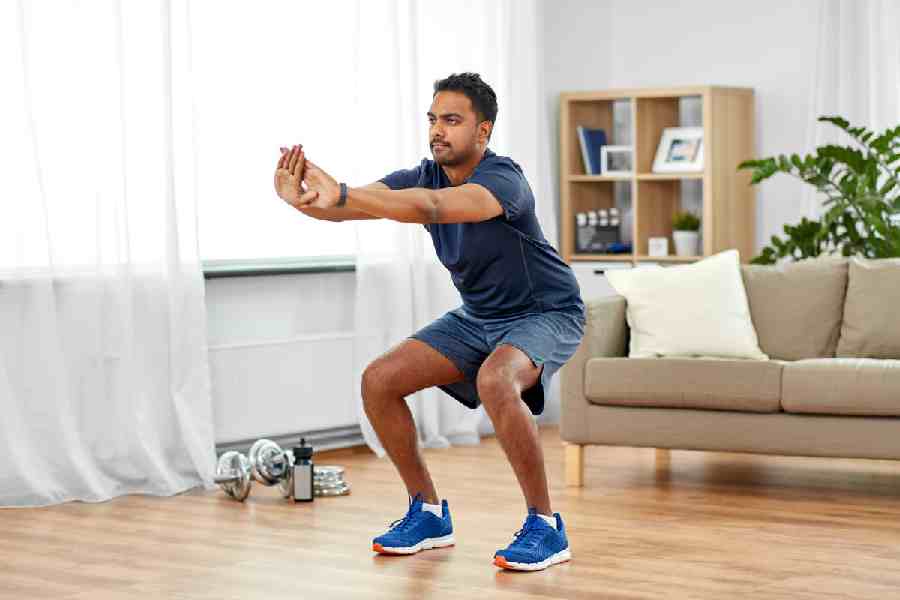Some exercises are easy, others are tough but manageable. But there are always a few that we truly abhor. “There are movements that some people are never going to want to do, and that’s okay. But most people underestimate themselves when it comes to fitness,” said Ashantis Jones, a mental health counsellor and personal trainer in Chicago, US. Trying something hard and realising you actually can do it, Jones added, is a confidence boost with benefits that stretch beyond the gym.
In a 2022 study, scientists found that adults they classified as unhappy reported higher
life satisfaction after trying (often physical) activities outside their comfort zone. “No one likes to do things they aren’t good at,” said Crystal Fasano, a personal trainer and Pilates instructor based in Brooklyn in New York City, US. But “change happens when we get a little uncomfortable”, she said. The secret: every exercise can be modified, and any version of an exercise counts.
Here are some of the most valuable but least-loved exercises, according to a sampling of experts, and how we can make them a little more appealing.
Planks
The classic plank involves holding your body horizontal, in a straight line, with your hands or forearms and toes on the floor. But that’s not the only way to do it. “You can do forearms and knees, or hands and knees,” Jones said. You can also put your hands on a sturdy chair or table or even a wall: elevating your upper body removes some of the weight from the plank to make it more doable, Jones added.
Jumping
There are circumstances — injuries, recent surgeries, joint instability — that might make jumping a bad idea. And if you have certain kinds of pelvic floor dysfunction, particularly stress incontinence or pelvic organ prolapse, it’s best to consult a physical therapist first and start slow. But it’s hard to find a more versatile movement: beyond balance and coordination, jumping raises your heart rate and even builds pelvic floor strength. And learning to land softly can help a lot.
Keep your knees slightly bent when landing, and aim to let your toes and the balls of your feet touch down first, rather than landing on a flat foot, Fasano said. Also, start slow and break down the movement. You can start with box step-ups before progressing to jumps onto a small box, then a larger box. Or, for jumping jacks, start with stepping jacks, then progress to hopping on your feet just a few inches apart, before going for a wider jump.
Squats
Start simple. “Sit on a bench and then get up. Do that a bunch of times,” said Maillard Howell, a personal trainer in Brooklyn and co-owner of Dean CrossFit. When you’re ready, try sitting on the bench and standing with your weight mostly on one leg for a few reps, then the other. Work your way up to a squat without a seat, and when that’s feeling good, add weight, he added. Our ankles need to be able flex deeply to allow our knees and hips to bend, said Jill Koshak-Johnson, a physical therapist in New Jersey, US. If you have limited ankle mobility, certain exercises and standing with your heels on a wedge (available at most gyms) can help.
Deadlifts
These can feel much more supported if you can address limitations in hip mobility as well as tension or tightness in the pelvic floor, Koshak-Johnson said. Prepare for your deadlift session with some exercises to activate the hip internal rotators and adductors. If needed, work your way up by trying a hip hinge on your knees, she said, then a standing one. Then add weight slowly, using a pair of light dumbbells to get the hang of it and asking a trainer or knowledgeable friend to watch your form.
Burpees
At its core, the burpee entails moving from standing to a horizontal position on the floor, and then getting back up again. An advanced burpee can involve quickly squatting down, jumping into a plank, performing a pushup, jumping forward into a squat, then jumping back into a standing position. But you can adjust any of the parts that feel
too uncomfortable, Jones said. You can step back into a plank, skip the pushup, step forward one foot at a time or stand without jumping.
“It also doesn’t have to be quick, it can be slow,” Jones added. None of those difficult elements “is necessary for a burpee to be a burpee”.
NYTNS










